Riot Control Rounds
Some of the rounds available to riot-control officers include:
Blunt-force rounds - These rounds cause pain when they strike, but they don't penetrate the skin. They are often fired at the ground so the round skips off the pavement and strikes the rioters in the legs.
Advertisement
- Wood Baton - 40-mm wooden cylinders (long-range and accurate)
- Rubber Baton - 40-mm rubber cylinders (long-range and accurate)
- Foam Baton - 40-mm foam cylinders (shorter-range because they are so light; they are fired at single aggressors who are getting close enough to the officer to directly threaten him or her) Each baton round is filled with small discs, like little hockey pucks, made of the appropriate material. When officers skip the rounds off the ground in front of rioters, the discs separate from the round and tend to hit multiple targets. Or, if they hit someone directly, the round breaks apart into the separate discs on impact, dissipating a lot of the kinetic energy. It hurts, but it has less chance of doing damage than if it were a solid chunk of the material. The object is to cause enough pain to get the rioter to comply with the officers.
- Bean Bag Round - Square-shaped bean bags (long-range, but they tend to be inaccurate; bean-bag rounds geared toward accuracy are teardrop-shaped with tails, not square)
- Sponge Round - Bullet-shaped round with a sponge tip (all-purpose, with middle-grade range and accuracy)
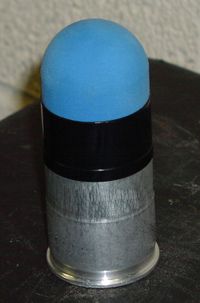
Stinger rounds - A Stinger round is loaded with small, rubber pellets that disperse on impact. Pepperball rounds - A paintball gun is slightly modified to fire pepper-spray pellets instead of paintballs. When these strike someone, the severe burning sensation in the eyes and nose will incapacitate most people without doing permanent harm. When children or elderly people might be present in a crowd, the police can instead use water pellets. It still stings to get hit with water pellets, and sometimes people are afraid they have actually been hit with pepper spray, so the crowd disperses.
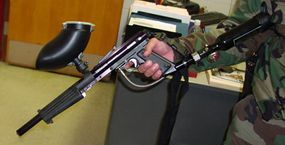
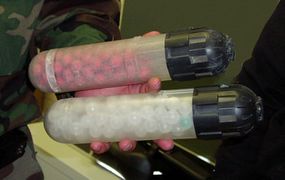
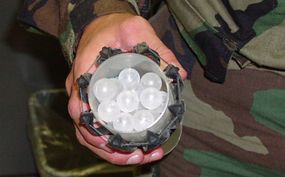
Aerosol grenades - These are metal canisters that are activated and thrown like regular grenades. They spray O.C. or C.S. gas (see below) over a wide area. Officers rarely throw these directly into a crowd, as this just causes panic. Usually, they use the gas as a sort of barricade to direct the crowd's movements in a certain direction. If a particular group of rioters were extremely violent (for example, if they were gathered around and beating a single victim), then a gas grenade might be thrown into the group to get them to run away.
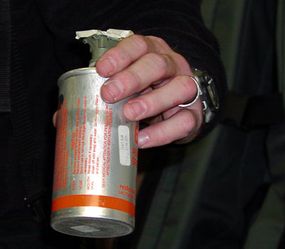
Ferret rounds - Ferret rounds are made to penetrate windows or wooden barricades, where they can then deposit a load of gas. These are used to flush people out of barricades and other standoff situations.
Dye rounds - Sponge rounds, ferret rounds and pepperball rounds can all be filled with marker dye. These are used to mark certain people in a crowd so that other officers can identify them or so that they can be caught later in case they flee the scene. In a riot, the leaders are often tagged with marker-dye rounds so the arrest team can pick them up later.
Gas rounds - These rounds are loaded with a gas that causes severe irritation to the eyes, nose and throat, and even causes contact skin burns in some cases.
- O.C. gas - Oleoresin capsicum, or pepper spray
- C.S. gas - Chlorobenzylidene malonitrile, a form of tear gas
Officers don't like to use gas rounds, because they know they're going to experience some of the effects of the gas themselves. Still, they wear gas masks and goggles to protect themselves in case the need arises.
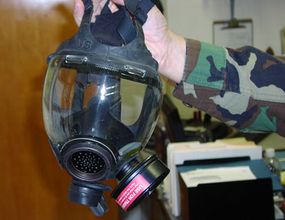
Another tool that crowd-control forces may rely on is the use of animals. Horses and dogs can be very effective at intimidating rioters. Plus, these animals are relatively unaffected by C.S. gas, which makes them ideal for riot situations.
